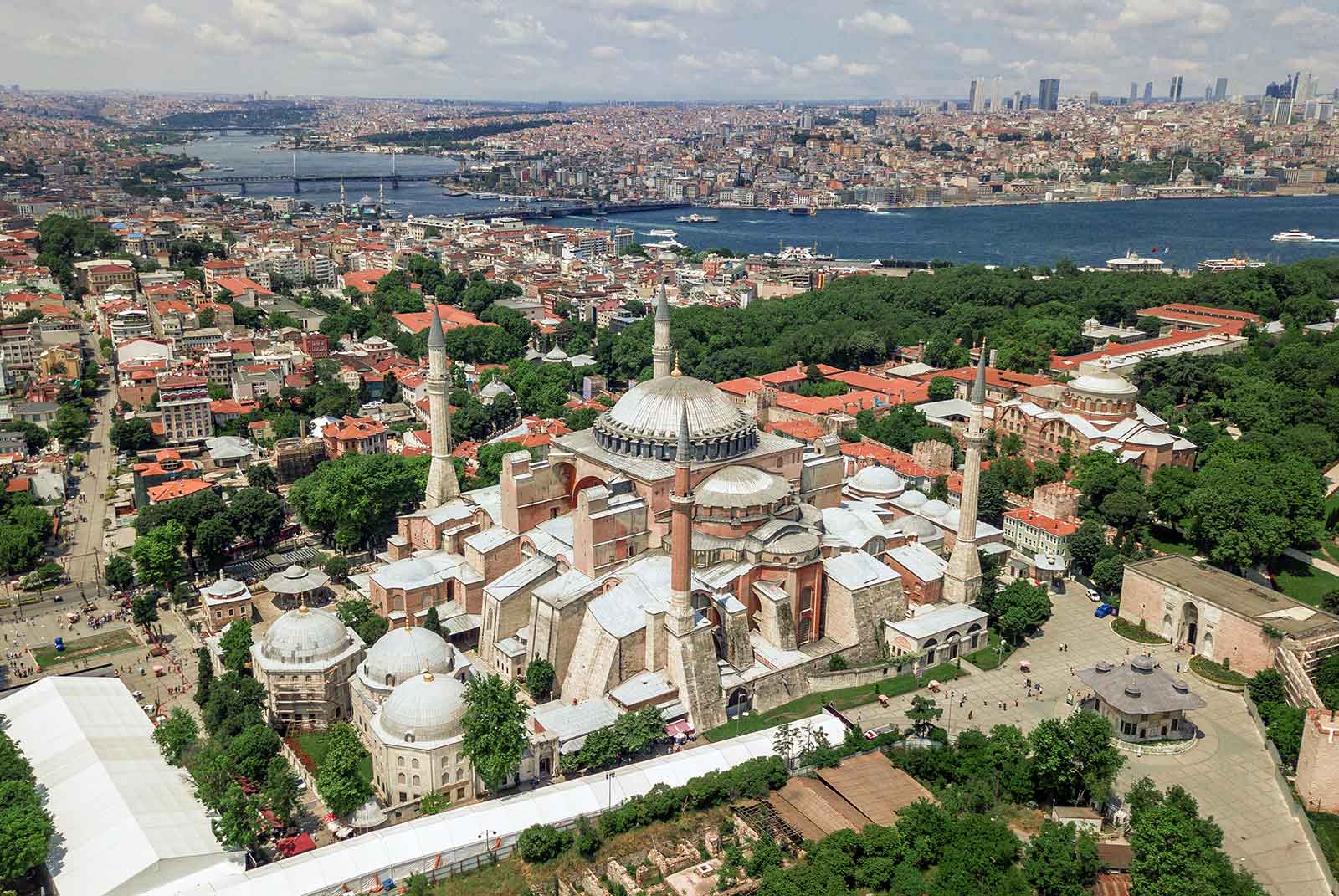
- On 18/11/2024
- In Places to visit Tips for travellers
- Tags:
When Was Hagia Sophia (Temple of St. Sofia) in Istanbul Really Built?
The Temple of St. Sofia, also known as the Hagia Sophia, stands as one of Istanbul’s most renowned landmarks and a marvel of architectural history. Yet this church, a masterpiece of architecture has a more complex story surrounding it, matched only by the intricately embellished walls of its interior. This ordinary building has been built destroyed and rebuilt multiple times and has seen the rise and fall of empires, wars, and religions. In the following post, we’ll explore the development of the Temple of St. Sofia focusing predominantly on the questions concerning its chronology: when was it constructed? All those interested in the history, culture and accommodation of the country will have to make an obligatory visit to the Hagia Sophia as during the time in Istanbul, its certainly a highlight.
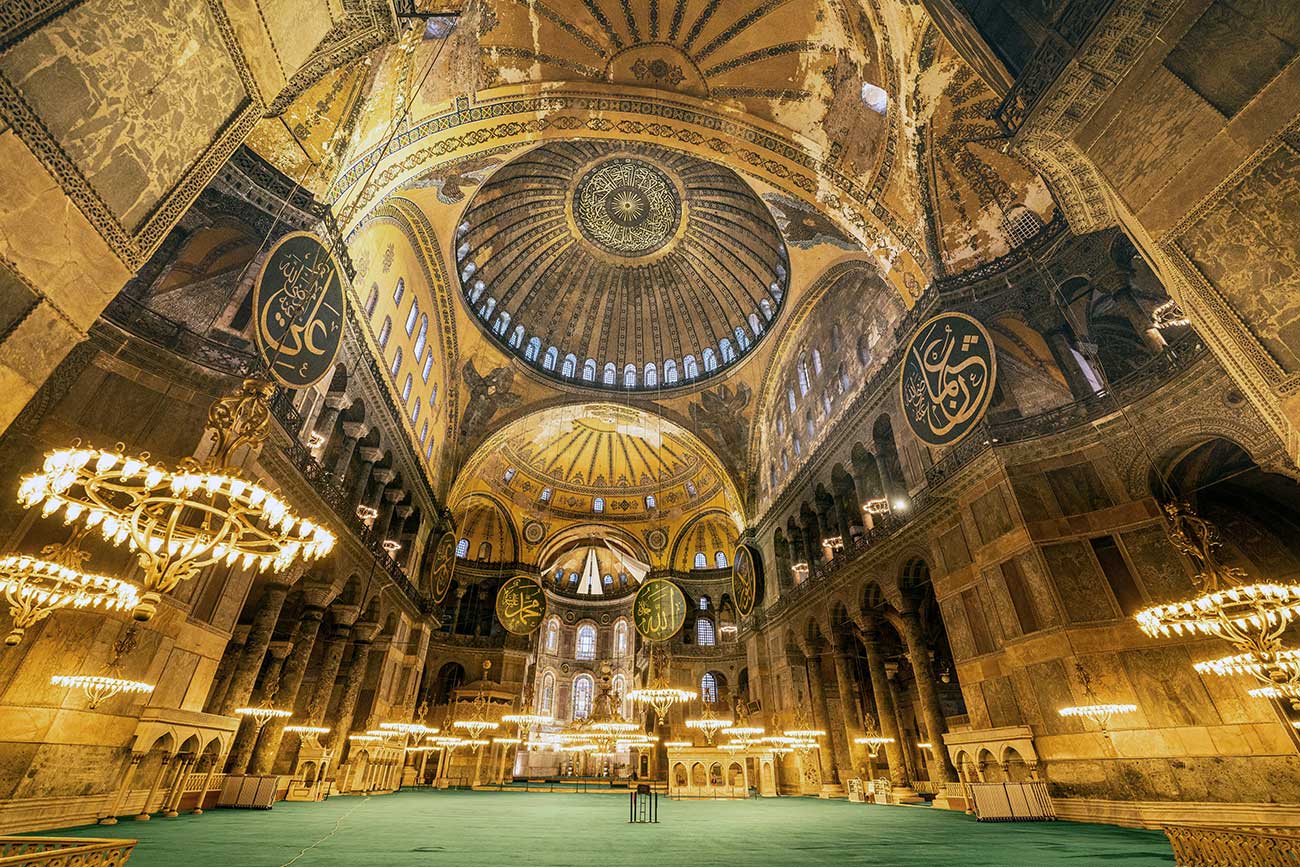
Hagia Sophia Interior View
The Earliest Foundations: Origins of the Hagia Sophia
The very first church on the site of today’s Hagia Sophia was commissioned by Emperor Constantius II in 360 AD. This Early church structure was made with love and care. A direct descendant of emperor Constantine ruled from this church. Unfortunately, The local population resorted to riots and fire which resulted in destruction of the church on several occasions in the past. But Such Phrases ‘each of them with the ever increasing grandeur’ has significance – glorifying the power of the Byzantine Empire but emphasizing the importance of religion as well.

Justinian I Mosaic
Emperor Justinian’s Vision: A New Era for Hagia Sophia
The New Era of The Hagia Sophia When we think of the Hagia Sophia today, we begin with Emperor Justinian I, who wanted to boom every other structure ever built and shout out the strength of the Byzantine Empire. Commissioned in A.D. 532 and completed in A.D. 537, Emperor Justinian’s Hagia Sophia was remarkable for its time period. Employing an ingenious method for the construction of the dome and design features, Justinian succeeded in creating not just a place of worship but also a place of arts. Now the guests can enjoy the beauty of the monument designed as an enduring legacy of the empire by Emperor Justinian.
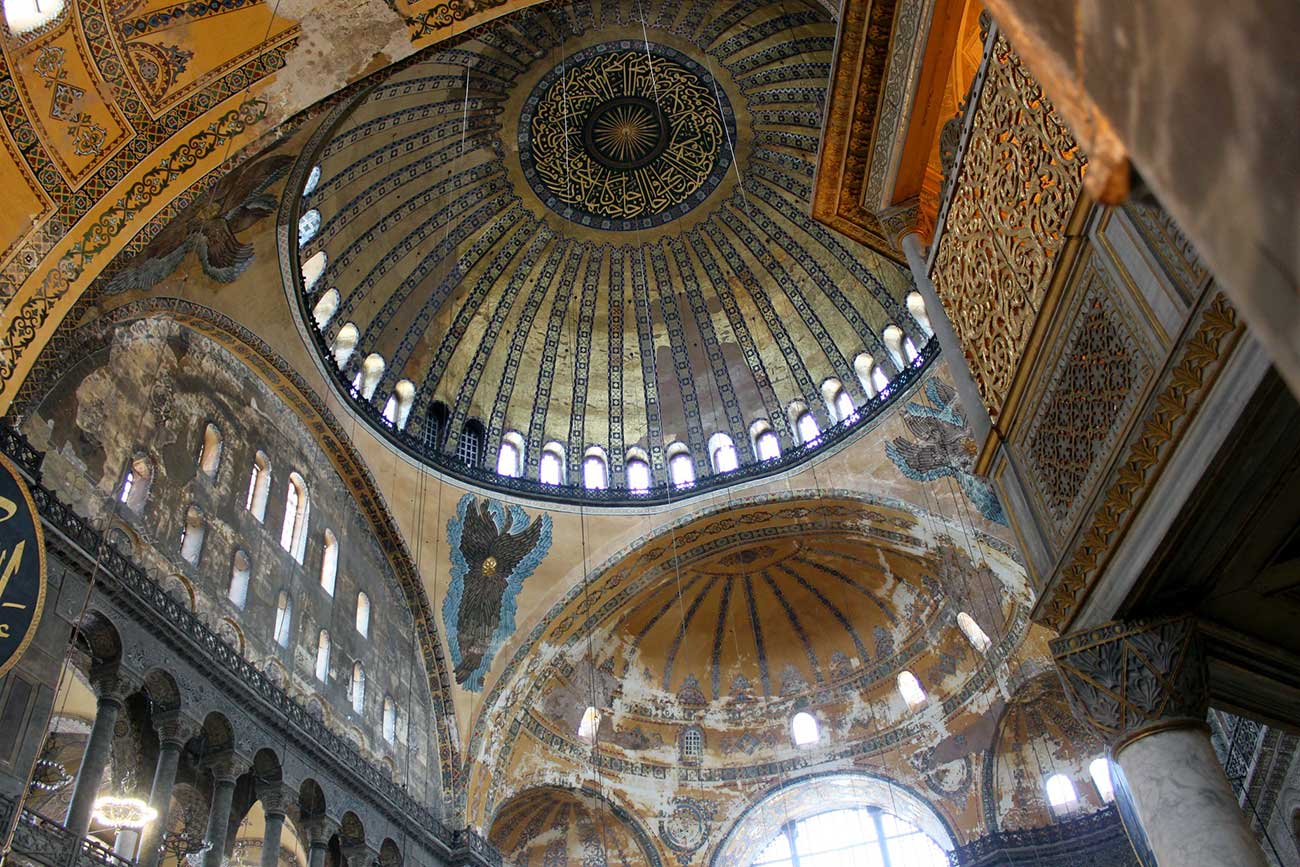
Hagia Sophia Dome
Architectural Innovations and the Dome’s Symbolism
The enormous dome, the most distinguished feature of Constantinople’s Saint Sophia Temple, deserves our attention. In those days, constructing a dome of such dimensions was an accomplishment of an enormous scale. This dome represented the sky and was supposed to evoke a sense of the sacred for those who crossed the thresholds. Two master builders, Anthemius of Tralles and Isidore of Miletus, were commissioned by Justinian, who made use of new technologies, including pendentives which are used to place the dome over a square base. For almost a thousand years it was the biggest dome in the world and attracted the attention of artists and architects in equal measure.
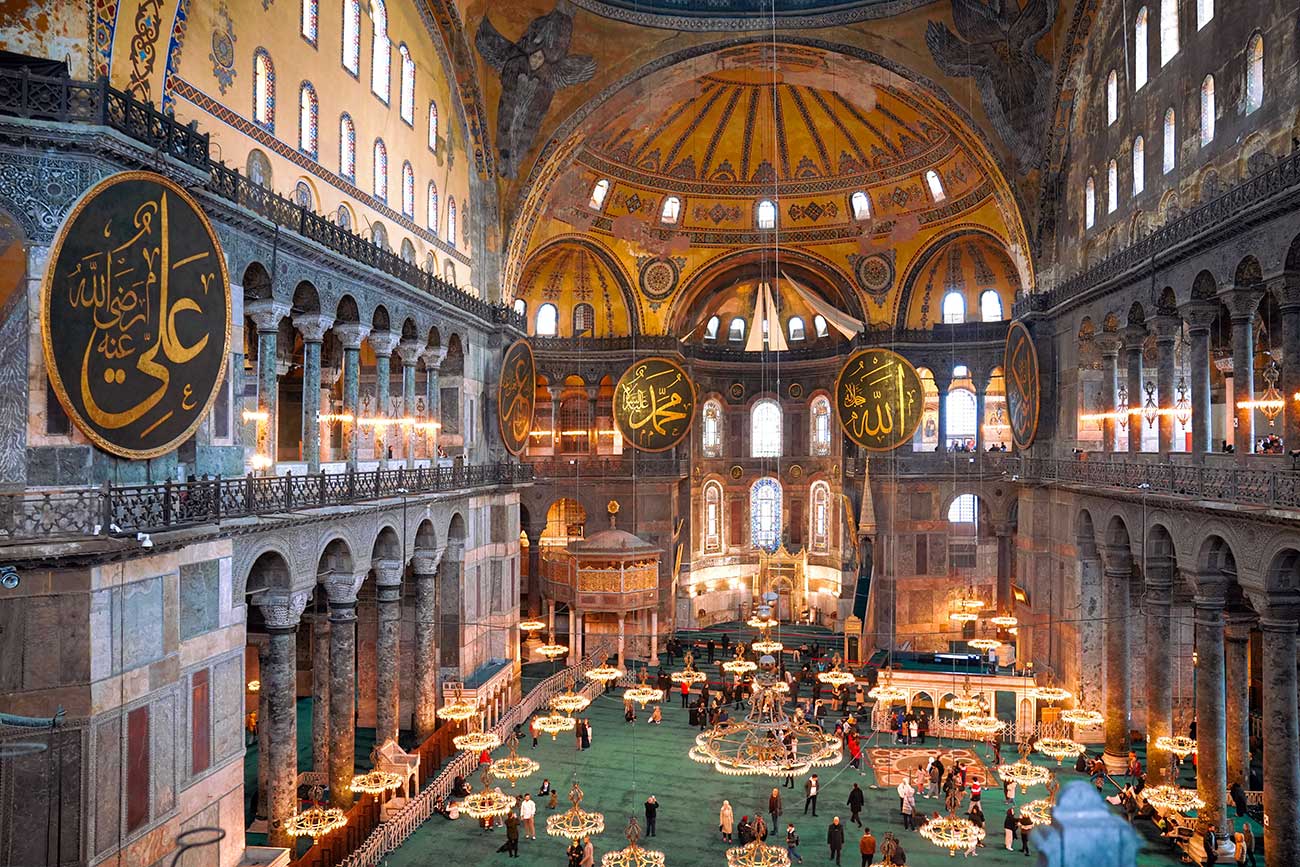
Hagia Sophia Inside
Transformation Over the Centuries: From Church to Mosque to Museum
The Hagia Sophia started as a Christian basilica but underwent changes through time. Upon the conquest of Constantinople by Ottoman Sultan Mehmet II in 1453, he ordered the restoration of the Hagia Sophia and its transformation into a mosque, which is culturally significant. The Ottomans also created minarets, a mihrab, and a minbar in the place. Later in 1935, when the republic of Turkey came into existence, it was made a museum and so people of all religions could regard its value.
By the year 2020 the Hagia Sophia was turned back into a mosque, but continues to invite visitors who are willing to explore its art and a great deal of history.
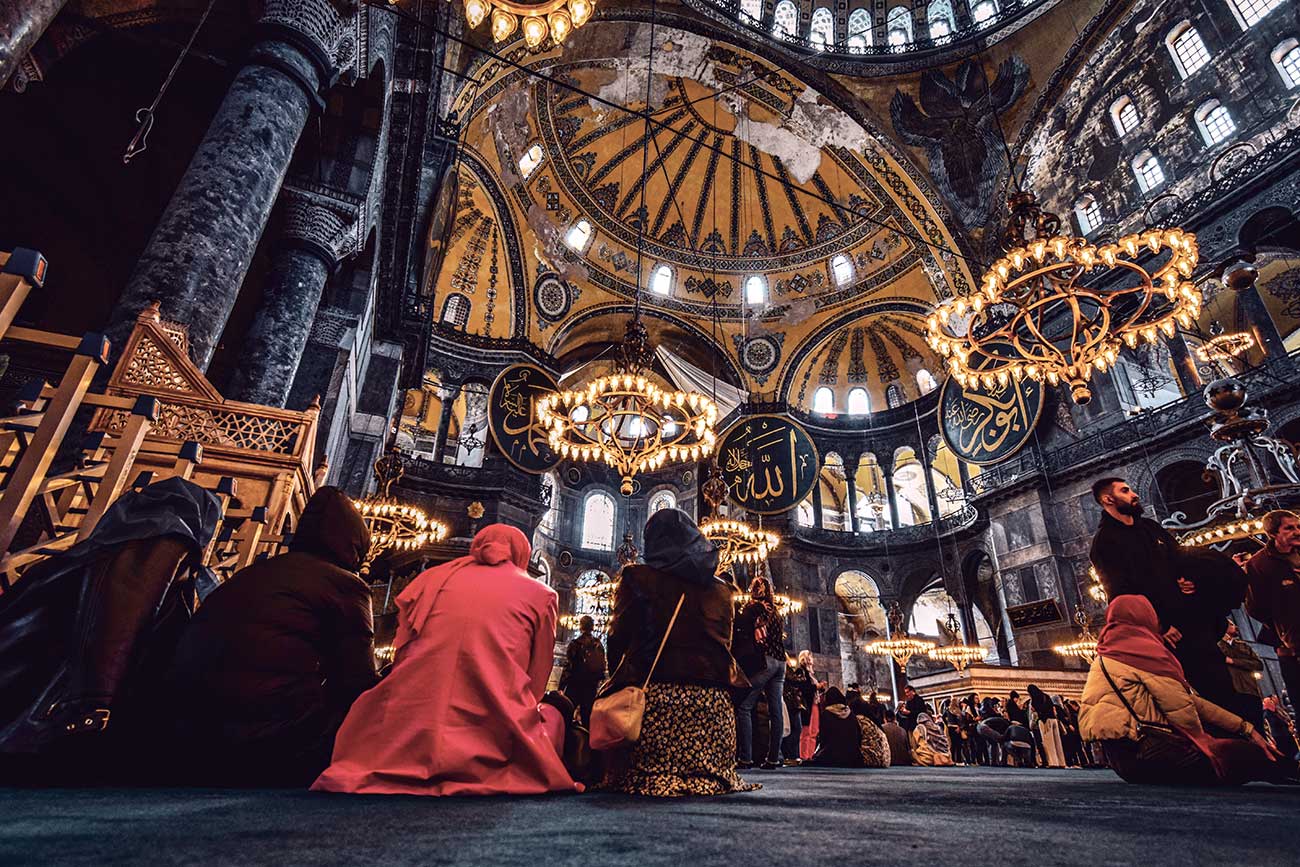
Hagia Sophia and Visitors
Why Visit Hagia Sophia Today?
With centuries of history and a blend of Byzantine and Ottoman influences, Hagia Sophia is more than just an architectural wonder – it’s a monument to Istanbul’s multicultural past. Inside, you can witness a fascinating mixture of Christian mosaics and Islamic calligraphy side-by-side, each layer telling a different part of its story. Whether you’re an architecture lover, history enthusiast, or simply curious, Hagia Sophia offers an unforgettable journey through time.
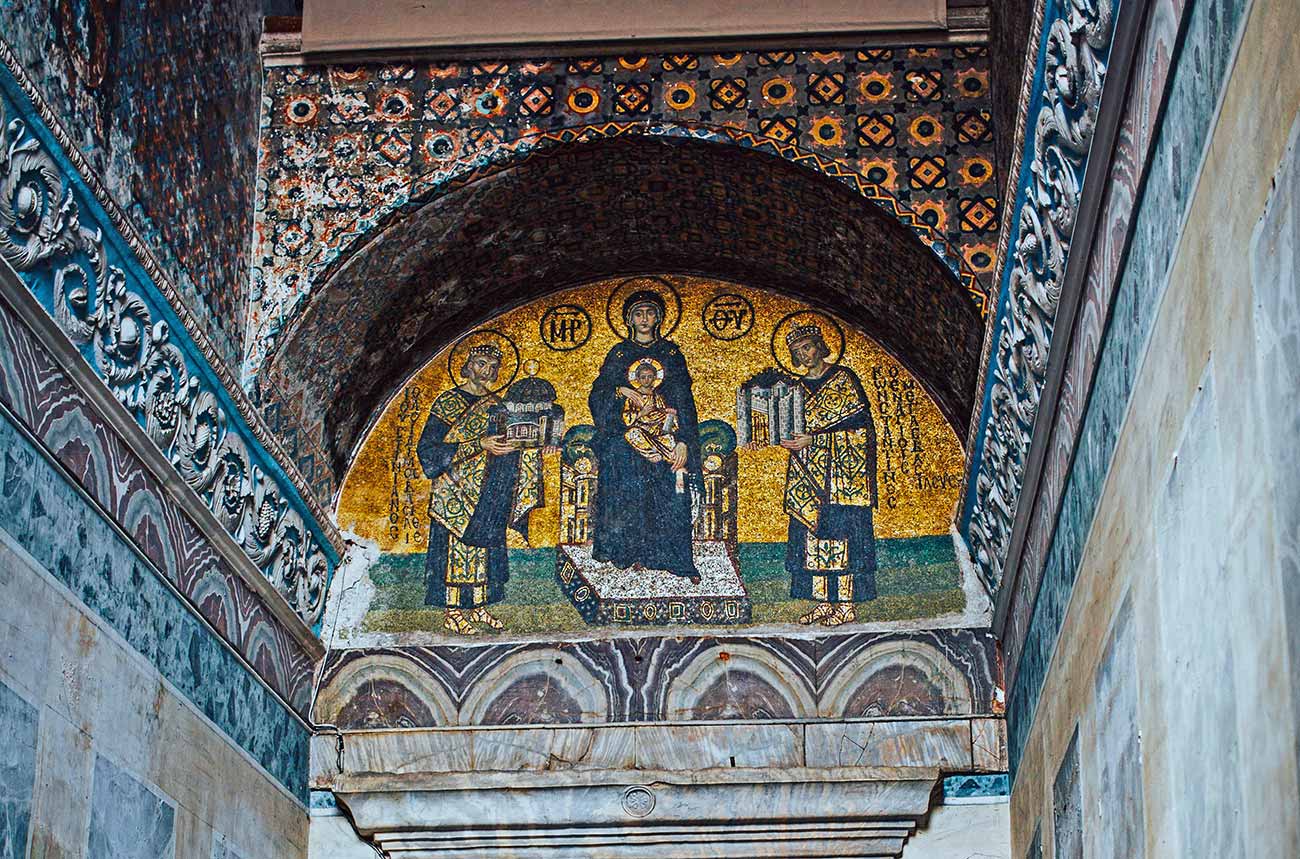
Hagia Sophia Mosaic
How to Make the Most of Your Hagia Sophia Experience
To truly appreciate the Temple of St. Sofia, we recommend a guided tour. Our local experts can help you understand the details behind its artistic mosaics, architectural techniques, and cultural transformations. Each section of Hagia Sophia reveals something unique, and a private tour is a great way to uncover its many secrets.
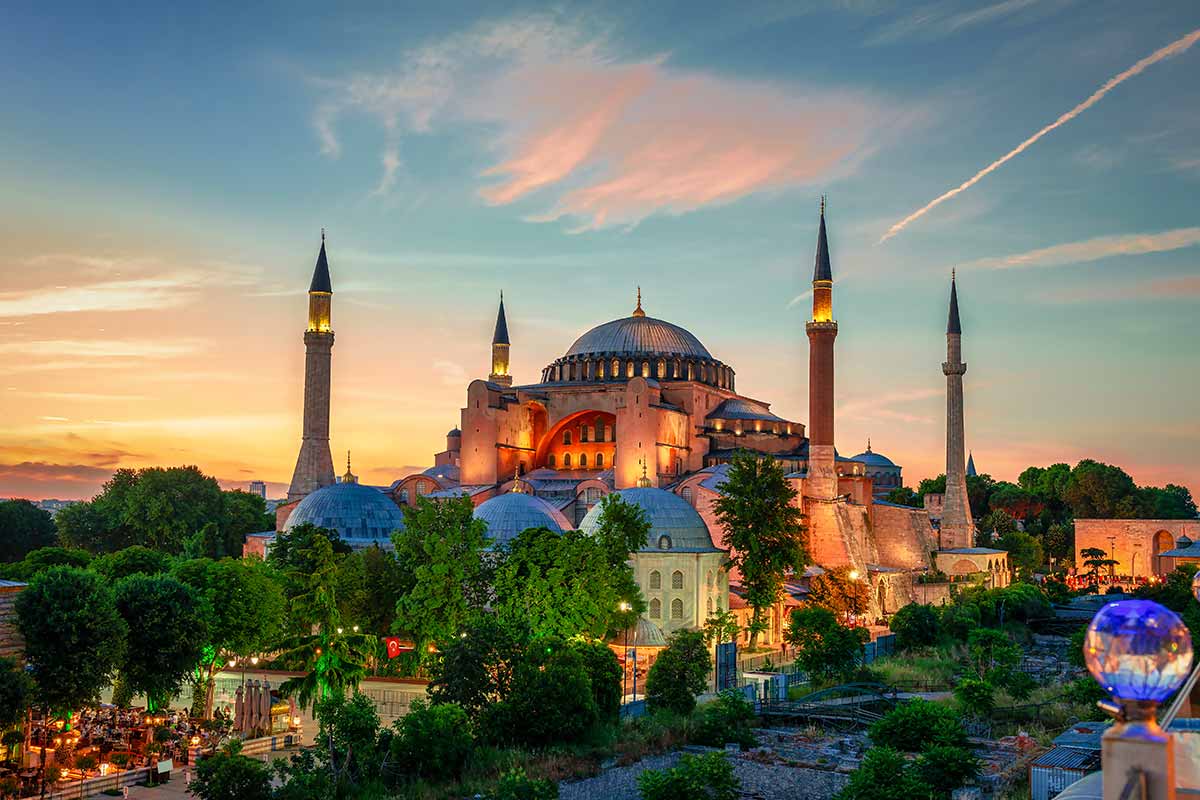
Hagia Sophia Outside View
The Temple of St. Sofia has endured change for centuries, from the Byzantine origin to the Ottoman empire time, to the mosque it is known now. Many history lovers will not regard Hagia Sophia just as one of the places to visit, but as the place where ancient story of changing Istanbul is being told. But if that is the case, when was it actually constructed? It is expected that 360 A.D. may be accepted as the beginning period of its history, nevertheless, its current form can be regarded as due to the imagination of Emperor Justinian who more than one and half centuries ago wished to create a temple which was unparalleled.
Join us on a tour and see how the history of Hagia Sophia, the eternal Pearl of Istanbul, unfolded. For a private tour, be in touch with us and watch the scenes from Istanbul’s past unfold before you.



